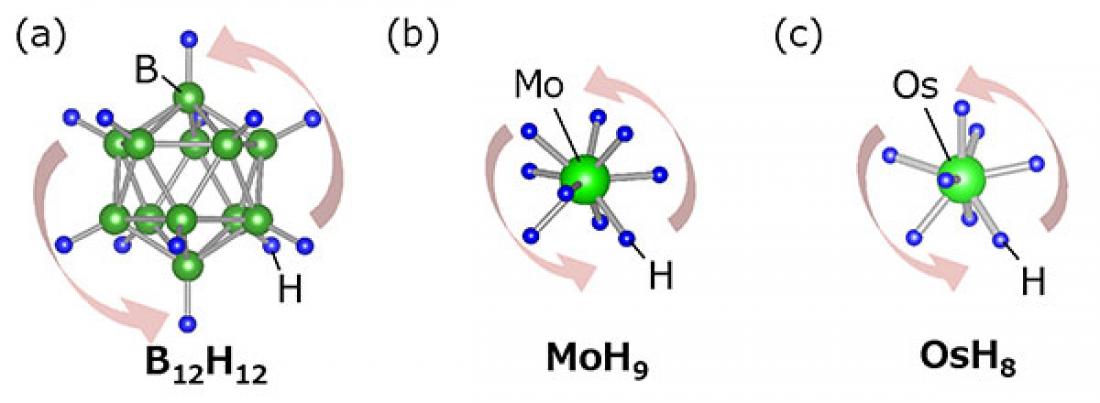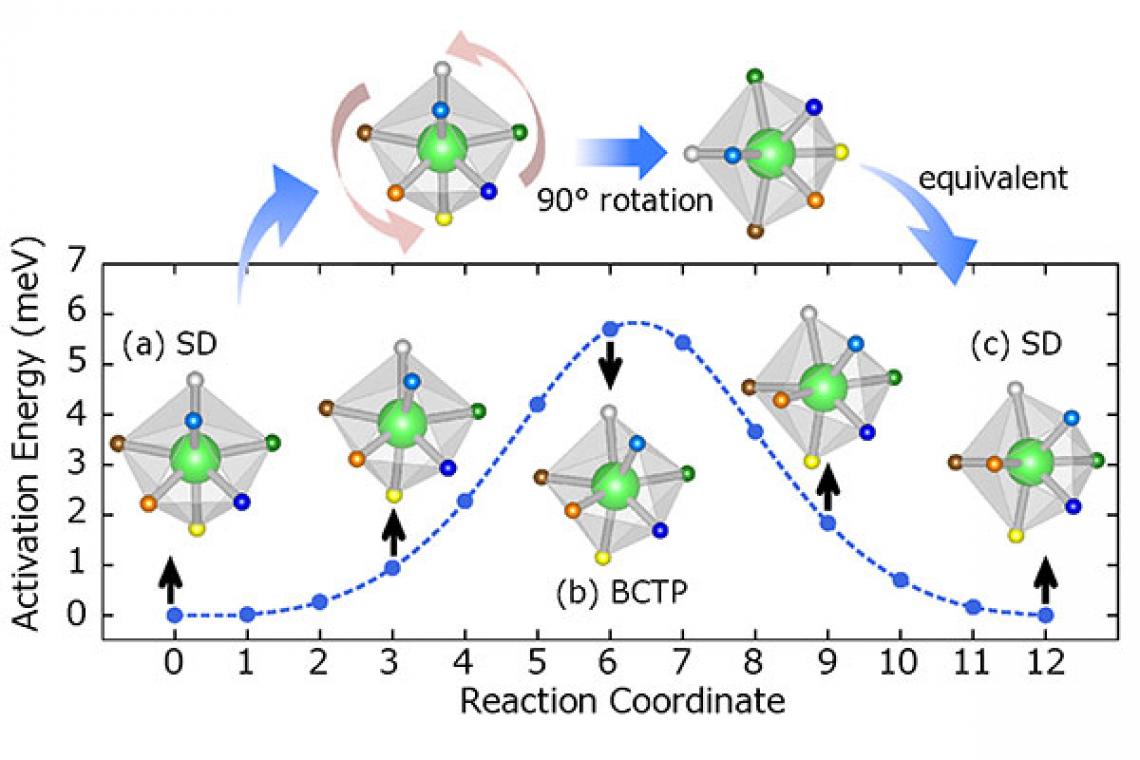Figure 1:Typical polyanions found in solids. (a) B12H122-, (b) MoH93-, and (c) OsH82-.
To that end, much effort has been devoted to finding materials with superior ionic conductivities. Among the most promising, are solid-state ionic conductors that contain polyanions such as B12H122- (Fig. 1a). They constitute a particular class of materials due to their unique transport behavior, which has the polyanions rotating at an elevated temperature, thereby greatly promoting cation conductivities.
However, a major drawback is the high temperature (=energy) required to activate the rotation, which conversely means low conductivities at room temperature.
To address that problem, a research group at Tohoku University, led by Associate Professor Shigeyuki Takagi and Professor Shin-ichi Orimo, has established a new principle for room-temperature superionic conduction. Its findings were recently published in Applied Physics Letters.
The research group was able to reduce the activation temperature by using transition metal hydride complexes as a new class of rotatable polyanions, wherein hydrogen is the sole ligand species, covalently binding to single transition metals. Unlike in B12H122- polyanions (Fig. 1a), the rotation of transition metal hydride complexes only requires displacements of highly mobile hydrogen (Figs. 1b, 1c) and can therefore be expected to occur with low activation energy.
The group then studied the dynamics of transition metal hydride complexes in several existing hydrides, and found them reoriented - as if rotating by repeating small deformations (Fig. 2) - even at room temperature.
Figure 2: Potential energy landscape along minimum energy pathway for typical 90° reorientation of OsH82-. The insets show the variation of molecular geometries, where the original snub disphenoid (SD) rotates by 90° via sequential transformation into bicapped trigonal prism (BCTP).
This kind of motion is known as "pseudorotation," and is rarely observed in solid matter. Due to the small displacements of hydrogen atoms, the activation energy of the pseudorotation is relatively low - more than 40 times lower than what's reportedly needed for the rotation of B12H122-.
As a result of a cation conduction being promoted from a low temperature region by pseudorotation, the lithium ion conductivity in Li5MoH11 containing MoH93- (Fig. 1b), for example, can reach 79 mS cm-1 at room temperature (Fig. 3). This is more than three times the world record of room-temperature lithium ion conductivity reported so far. This suggests that an all-solid-state lithium ion battery with shorter charging time at room temperature can be realised.
Figure 3: Lithium ion conductivity in Li5MoH11 and several known materials.
The discovered mechanism is quite general and would be useful in lowering the temperature required to activate the rotation of polyanions. This may positively contribute towards finding compositions that are amenable to room-temperature superionic conductors.
Contact:
Shigeyuki Takagi
Institute for Materials Research, Tohoku University
Tel: +81-22-215-2094
Email:shigeyuki.takagiimr.tohoku.ac.jp
Website: https://www.wpi-aimr.tohoku.ac.jp/en/index.html





